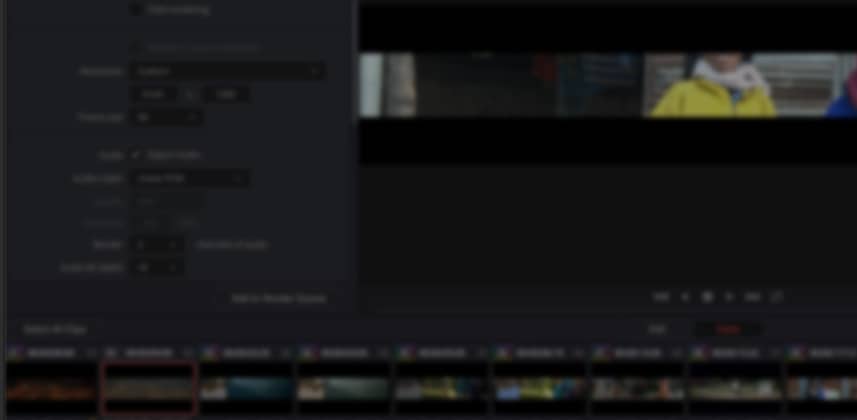| Series |
|---|
Advanced Finishing Techniques: Part 3
How to Deal With Revisions in Scene Cut Detection Workflows
This series is about workflow. Specifically, dealing with oversized, non-standard frame sizes—like the kind you’d find in museum installations or outdoor exhibitions. One of the decisions I made back in Part 1 of this series was to NOT go the XML import route and link back to the camera original footage. A few Mixing Light members commented that this can be detrimental, especially if your source footage is RAW or in a 4:4:4 codec.
Personally, I 100% advocate always relinking to the camera original footage, but…
The complexity of the original timeline, the need for quick turnarounds and literally no room for silly XML roundtrip mistakes combined to force me to adopt the ‘flat-file’ workflow on this job. I pride myself on knowing how to get a job done on-time and on-budget and that’s why understanding this workflow—and the nuances that arise from it—are what makes me valuable to my clients. I won’t slaughter the budget or the schedule on the alter of ‘perfection’.
What’s valuable is knowing when the corners we cut have an actual impact on the final product. And in this job, as long as the editor renders me out a ProRes444 file, I know the single Quicktime movie they’re handing me will encapsulate all the detail and nuance of every shot in the timeline since this timeline only had two RAW shots (which I had them deliver to me separately).
When developing your preferred workflow, you always need to have a backup plan
For me, more and more, this Scene Cut Detection workflow is my ‘Ace in the Hole‘. Early on in my conversations with my clients, I push them to provide me with an XML of their timeline and the camera original footage. And they usually appreciate my initial suggestion since the ‘big boy post houses’ in New York and LA almost always push for the Flat File Workflow (usually requesting DPX exports).
When I suggest I can deliver back to them an actual timeline with color corrected footage that has ‘handles’ (allowing their editor to make slight editorial changes without coming back to me to color correct and render those extra frames), suddenly I look to them like David slaying the big boy Goliath.
But in the past year, probably half my jobs benefited from Scene Cut Detection
And I don’t fight the trend; if a project benefits from this workflow then I’ll adapt. But it also means I need to understand the intricacies of working ‘flat file’.
In Part 3, we’re going to look at the intricacy of revising shots in Scene Cut Detection
The key is to make sure our editor starts her render from the same timecode start with each revised Quicktime that she sends us. If she doesn’t, we’ll need to find a cut point in the first few seconds of the movie to line up the revised edit with the initial edit that we ran through the Scene Cut Detector.
To keep this workflow from bogging down, I don’t try to replace every shot in the original timeline with the newly revised movie. After all, if a single shot is shortened by even a frame or two, all my edits will be wrong for the rest of the movie.
No – the key is selective use of Resolve’s ‘Force Conform’ command and only update the bits of the timeline that need updating and leave everything else alone.
We’ll also look at using an Output mask during color correction to solve another problem.
And why I need to remove the Output mask when doing my final render.
Enjoy!
-pi
Member Content
Sorry... the rest of this content is for members only. You'll need to login or Join Now to continue (we hope you do!).
Need more information about our memberships? Click to learn more.
Membership optionsMember Login


